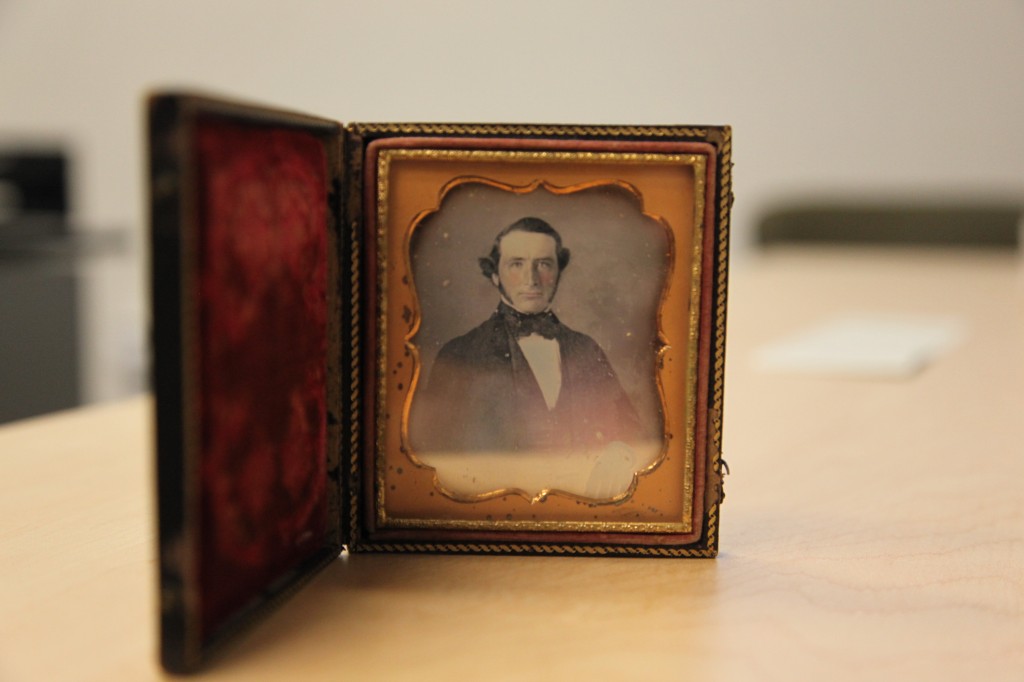If you have been to Google today, it may have come to your attention that today is the 224th anniversary of the birth of Louis Daguerre, inventor of the first permanent photographic process, called a daguerreotype. Daguerreotypes were used from around 1839 to 1860, and differ in many ways from later photographic types: the process created a direct positive on a silvered copper plate. The result is a somewhat mirrored image, that because of its fragility, would have often been stored in a decorative case, behind a piece of glass. Because the image was transferred directly as a positive (meaning, there is no negative) it was not possible to make copies of the same image- every daguerreotype in existence is completely unique.
A search in our B.C. Historical Photograph Collection yields one lone example of a daguerreotype, a portrait of an unidentified man:
You can see that his rosy cheeks have been hand-painted on. Like many daguerreotypes, this one is in a decorative case:
For more daguerreotypes:
Library of Congress daguerreotype collection
Daguerreotypes at Harvard University
Search for daguerreotypes at Library and Archives Canada
See the process at the Getty Museum
and just for fun:
CBC wants you to send in your daguerreotype-style photos
My Daguerreotype Boyfriend (full disclosure- they aren’t all daguerreotypes)
For information on searching photograph collections at UBC, check out our Historical Photographs research guide.

